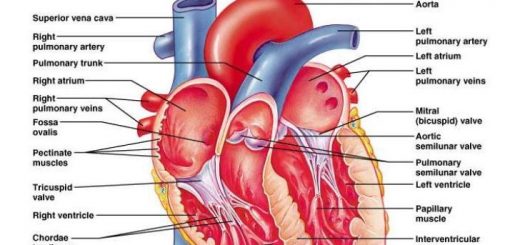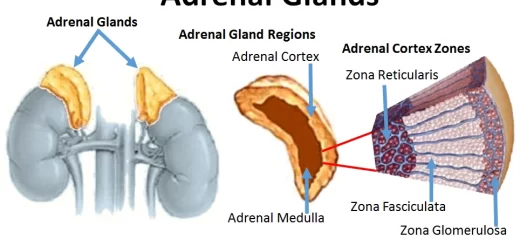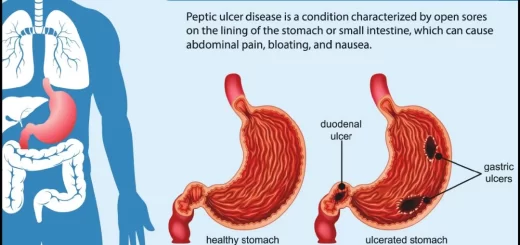Thigh function, muscles, structure and superficial fascia of the thigh
The thigh is the region of the lower limb that is approximately between the hip and knee joint, The single bone in the thigh is called the femur. The femur is very thick and strong (due to the high proportion of bone tissue) and forms a ball and socket joint at the hip, and a modified hinge joint at the knee. The femur is the only bone in the thigh and serves as an attachment site for all muscles in the thigh, It is the strongest & longest bone in the body.
Thigh
The thigh is a part of the lower limb, It includes some of the largest muscles in the human body. The medial thigh muscles are important, they allow normal gait and function of the lower extremity. The medial thigh muscles allow the adduction of the leg. the thigh contains three separate compartments, divided by fascia, each containing muscles.
The superficial fascia of the thigh
It is formed of 2 layers:
- The membranous layer is attached to the deep fascia about a finger-breadth below the inguinal ligament.
- Membranous layers: deep. It is attached to the deep fascia about a finger-breadth below the inguinal ligament.
The deep fascia of the thigh (fascia lata)
It encloses the thigh like a trouser. Its upper end is attached to the pelvis. Its lateral aspect is thickened to form the iliotibial tract. The saphenous opening is an opening in the deep fascia of the thigh one and half inches (4 cm) below and lateral to the pubic tubercle, Its upper, lateral, and lower margins are sharp (the falciform margin). It is closed by cribriform fascia which is perforated by a great saphenous vein, superficial inguinal arteries, and lymph vessels.
Compartments of the thigh
The thigh is divided into three compartments by intermuscular septa between the posterior aspect of the femur and the fascia lata: The three fascial compartments of the thigh: anterior (extensor), medial (adductor), and posterior (flexor).
- Anterior (extensor) compartment: Muscles are pectineus, iliopsoas, sartorius, quadriceps femoris. The nerve is the Femoral nerve.
- Medial (adductor) compartment: Muscles are Adductor longus, Adductor brevis, Adductor Magnus, Gracilis, Obturator externus. The nerve is the Obturator nerve.
- Posterior (flexor) compartment: Biceps femoris, Semitendinosus, Semimembranosus, Nerve is Sciatic nerve.
Anterior compartments of the thigh
Cutaneous nerves of the front of the thigh:
- The lateral cutaneous nerve of the thigh.
- Femoral branch of genitofemoral nerve.
- Ilioinguinal nerve.
- The medial cutaneous nerve of the thigh.
- Obturator nerve.
- The patellar plexus in front of the knee.
Muscles of the anterior compartment of the thigh
Pectineus
- Origin: Superior ramus of the pubis.
- Insertion: Pectineal line of femur.
- Nerve supply: Femoral nerve; sometimes also by the obturator nerve.
- Action: Adduction and flexion of the hip; medial rotation of the thigh.
Psoas major (illiopsoas)
- Origin: Sides of T12- L5 vertebrae and discs between them; transverse processes of all lumbar vertebrae.
- Insertion: Lesser trochanter of femur.
- Nerve supply: Ventral rami of L1-L3.
- Action: Flexion of thigh at hip.
Iliacus (illiopsoas)
- Origin: Oliac crest, iliac fossa, ala of sacrum.
- Insertion: lesser trochanter.
- Nerve supply: Femoral nerve.
- Action: Flexion of the thigh.
Sartorius
- Origin: Anterior superior.
- Insertion: Superior part of the medial surface of the tibia.
- Nerve supply: Femoral nerve.
- Action: Flexion of the thigh, help in flexion of the knee.
Quadriceps Femoris
Rectus femoris
- Origin: Anterior inferior iliac spine and ilium superior to acetabulum.
- Insertion: Common tendinous (quadriceps tendon) to the base of the patella; the patellar ligament attaches to the tibial tuberosity
- Nerve supply: Femoral nerve.
- Action: Extension of the leg at the knee joint; flexion of the hip.
Vastus Lateralis
- Origin: Greater trochanter and the lateral lip of linea aspera of femur.
- Insertion: Common tendinous (quadriceps tendon) to the base of the patella; the patellar ligament attaches to the tibial tuberosity
- Nerve supply: Femoral nerve.
- Action: Extension of the leg at the knee joint.
Vastus medialis
- Origin: Intertrochanteric line and the medial lip of linea aspera of femur.
- Insertion: Common tendinous (quadriceps tendon) to the base of the patella; the patellar ligament attaches to the tibial tuberosity
- Nerve supply: Femoral nerve.
- Action: Extension of the leg at the knee joint.
Vastus intermedius
- Origin: Anterior and lateral surfaces of the femoral shaft.
- Insertion: Common tendinous (quadriceps tendon) to the base of the patella; the patellar ligament attaches to the tibial tuberosity
- Nerve supply: Femoral nerve.
- Action: Extension of the leg at the knee joint.
The femoral triangle
It is a triangular area in the medial aspect of the thigh just below the inguinal ligament.
Boundaries:
- Superiorly (base) inguinal ligament.
- Laterally: Medial border of sartorius.
- Medially: Medial border of adductor longus muscle.
- Floor: Formed of the iliopsoas, pectineus, and adductor longus (from lateral to medial).
- Roof: Skin and fascia of the thigh.
Contents:
- Femoral nerve and its branches.
- Femoral sheath.
- The femoral artery and its branches.
- Femoral vein and its tributaries.
- Femoral branch of the genitofemoral nerve.
- Deep inguinal lymph nodes.
- The lateral cutaneous nerve of the thigh.
Femoral sheath
It is a downward protrusion into the thigh of the fascial envelope lining the abdominal walls.
- Anteriorly: it is formed by fascia transversalis.
- posteriorly: it is formed by fascia iliaca.
The femoral sheath is composed of three compartments:
- Lateral compartments: Contains the femoral artery and femoral branch of genitofemoral nerve.
- Intermediate compartments: Contains the femoral vein.
- Medial compartments (the femoral canal): Contains lymph node (called node of Cloquet). The upper opening of the femoral canal is the femoral ring. The femoral septum is a condensation of extraperitoneal tissue closing the ring.
Boundaries of the femoral ring:
Inguinal ligament (anteriorly), Superior pubic ramus (posteriorly), Lacunar ligament (medially), Femoral vein (laterally).
Clinical correlation
Femoral Hernia
The femoral ring is a site of potential herniation. A femoral hernia is a protrusion of the abdominal viscera through the femoral ring into the femoral canal. A femoral hernia may become strangulated due to the inflexibility of the inguinal ligament.
Femoral nerve
It is the largest branch of the lumbar plexus (L 2,3,4 dorsal divisions). It emerges from the lateral border of psoas major muscle within the abdomen then passes downward between the psoas and iliacus (behind fascia iliaca). It enters the thigh behind the inguinal ligament lateral to the femoral artery and femoral sheath (outside the femoral sheath). Termination: 1½ inch (4 cm) below the inguinal ligament, it terminates by dividing into anterior and posterior divisions.
Branches:
- Muscular: Muscles of the anterior compartment of the thigh
- Articular: to the knee and hip joints.
- Cutaneous:
- Intermediate cutaneous nerve of the thigh.
- Medial cutaneous nerve of the thigh.
- Saphenous nerve: descends on the medial side of the knee joint and the medial side of the leg then anterior to the medial malleolus and passes on the medial side of the foot reaching the metatarsophalangeal joint of the big toe.
Lower limb bones, anatomy, structure, features & muscles
Elbow joint function, structure, movements, ligaments & Small Joints of the Hand
Types of joints of upper limb, Ligaments & movements of the shoulder joint
Nerves of forearm and hand, Nerve injuries types & causes
Forearm bones, anatomy, function & Skeleton of the hand
Muscular tissue types, function, structure, definition & anatomy



